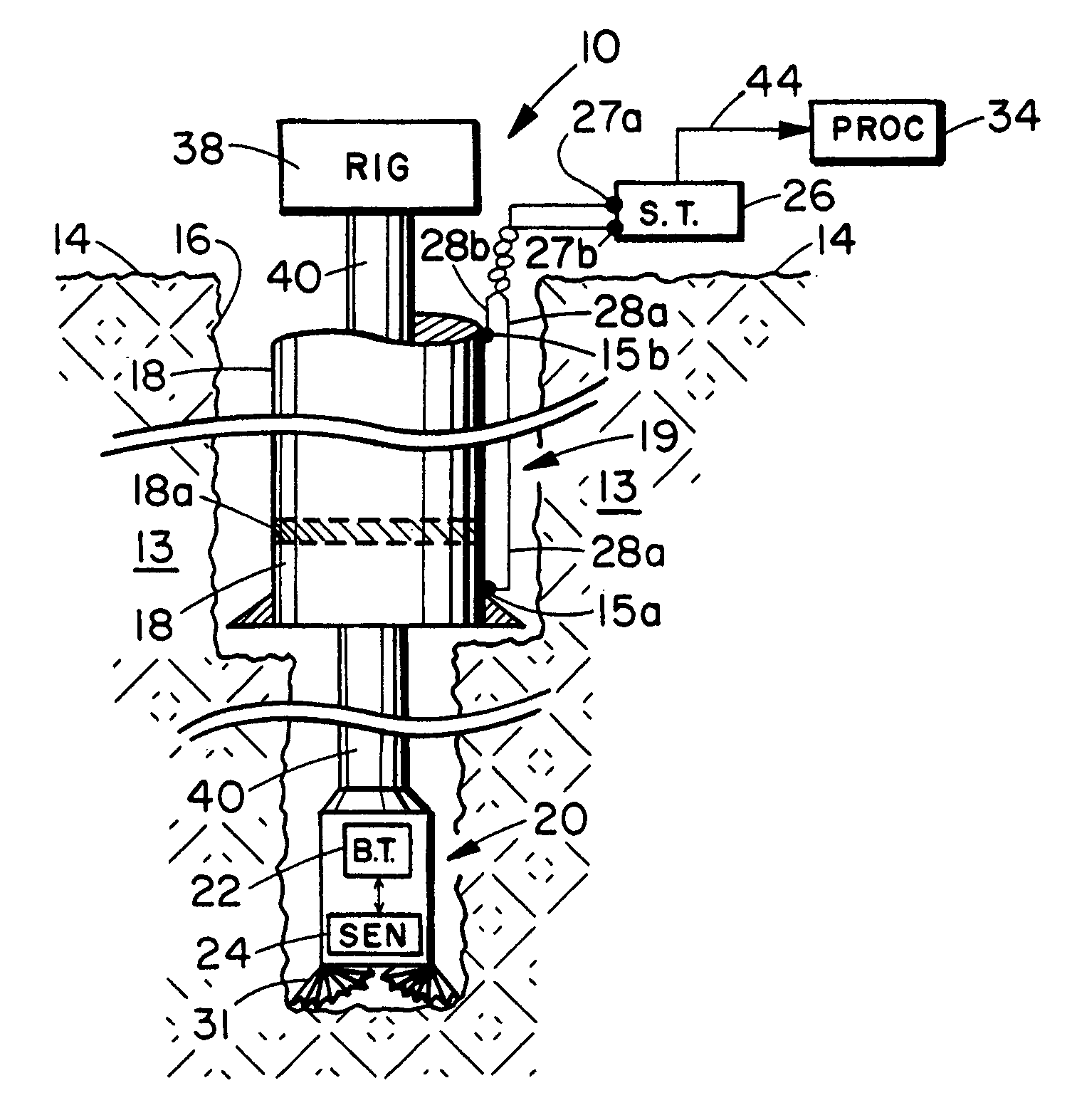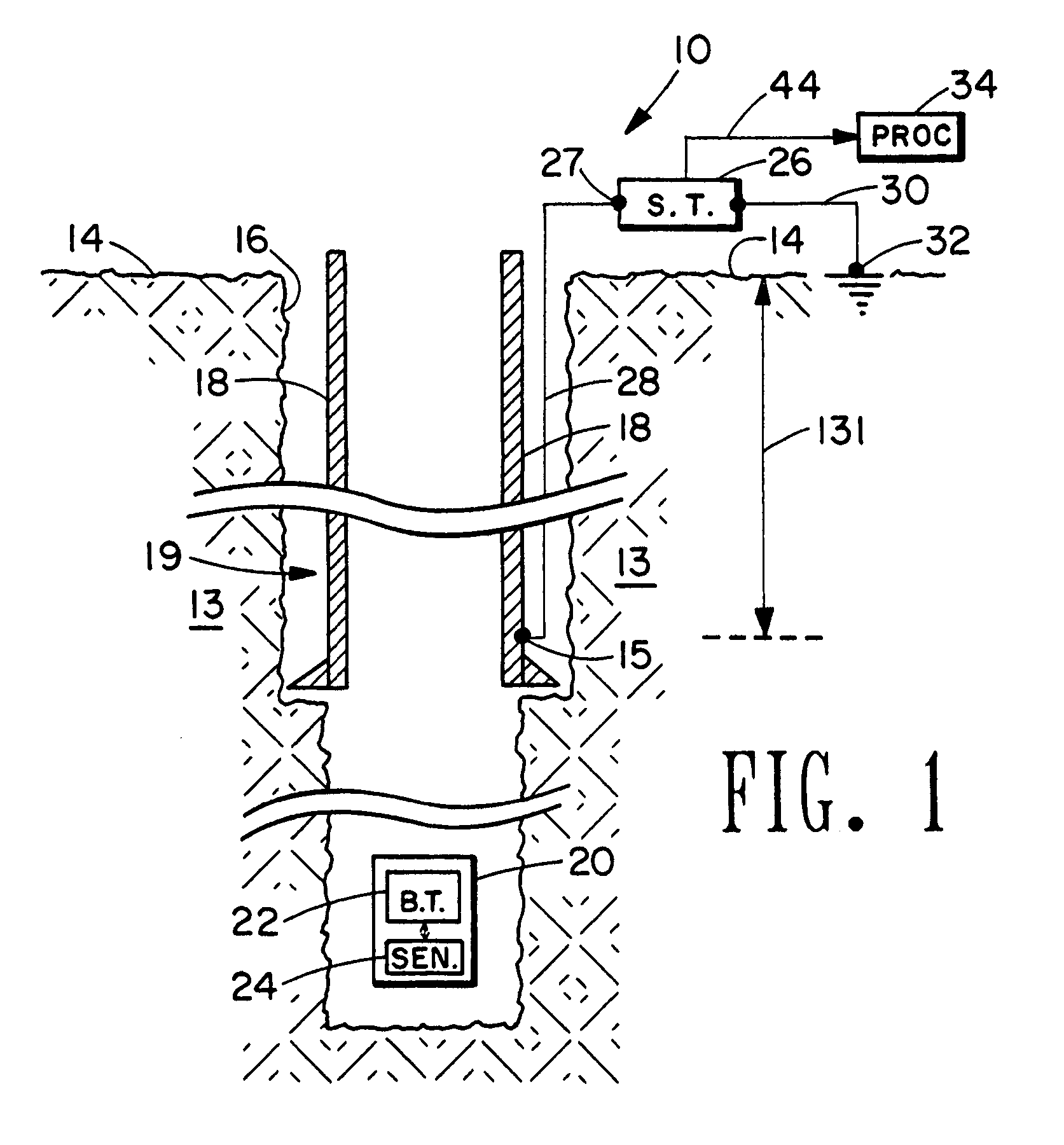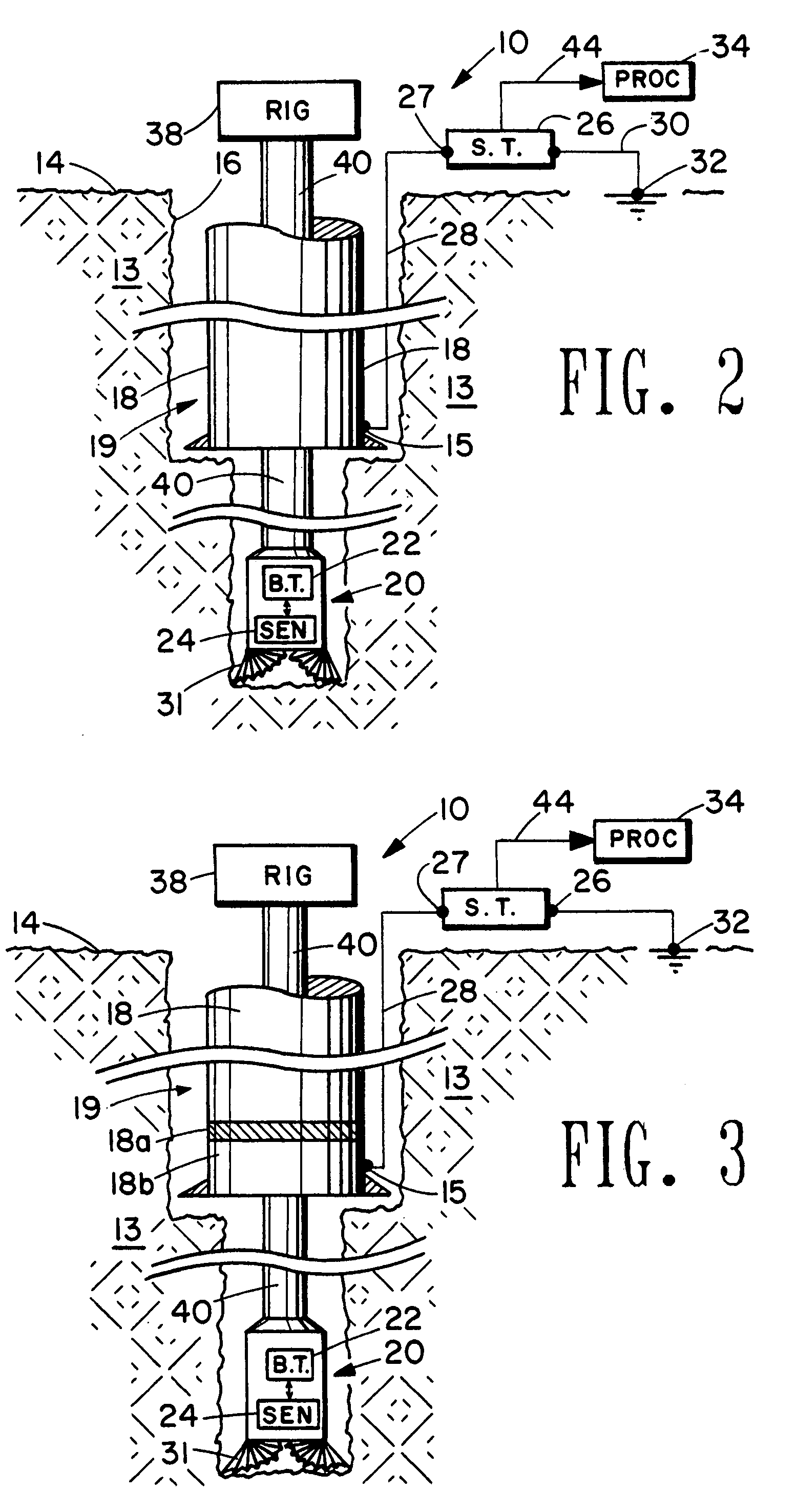Electromagnetic borehole telemetry system incorporating a conductive borehole tubular
a technology of electromagnetic borehole and conductive borehole, which is applied in the direction of borehole/well accessories, instruments, surveys, etc., can solve the problems of inability to operate with a “hard wire” communication link, inability to direct or hard wire data telemetry, and difficulty in operation of hard wire communication links between borehole and surface transceivers, etc., to achieve negligible attenuation, increase electrode radial separation, and increase response sensitivity
- Summary
- Abstract
- Description
- Claims
- Application Information
AI Technical Summary
Benefits of technology
Problems solved by technology
Method used
Image
Examples
Embodiment Construction
[0034]This present invention is directed toward an electromagnetic (EM) borehole telemetry system for transmitting information between a “borehole” EM transceiver, disposed preferably within a downhole assembly in the borehole, and a “surface” EM transceiver at or near the surface of the earth. It is noted that the “surface” EM transceiver need not be located on the surface of the earth, but it is always disposed above or “up-hole” with respect to the borehole EM transceiver. The telemetry system configured to measure downhole voltage and downhole field will be discussed separately in the following sections.
Downhole Voltage Measurement
[0035]FIG. 1 is a conceptual illustration of the basic elements of the invention, which is identified as a whole by the numeral 10. The system 10 operates at a low frequency, typically in the frequency range less than 100 Hertz (Hz). A string of conductive tubular, such as steel casing, is shown disposed within a borehole 19 penetrating earth formation...
PUM
 Login to View More
Login to View More Abstract
Description
Claims
Application Information
 Login to View More
Login to View More - R&D
- Intellectual Property
- Life Sciences
- Materials
- Tech Scout
- Unparalleled Data Quality
- Higher Quality Content
- 60% Fewer Hallucinations
Browse by: Latest US Patents, China's latest patents, Technical Efficacy Thesaurus, Application Domain, Technology Topic, Popular Technical Reports.
© 2025 PatSnap. All rights reserved.Legal|Privacy policy|Modern Slavery Act Transparency Statement|Sitemap|About US| Contact US: help@patsnap.com



